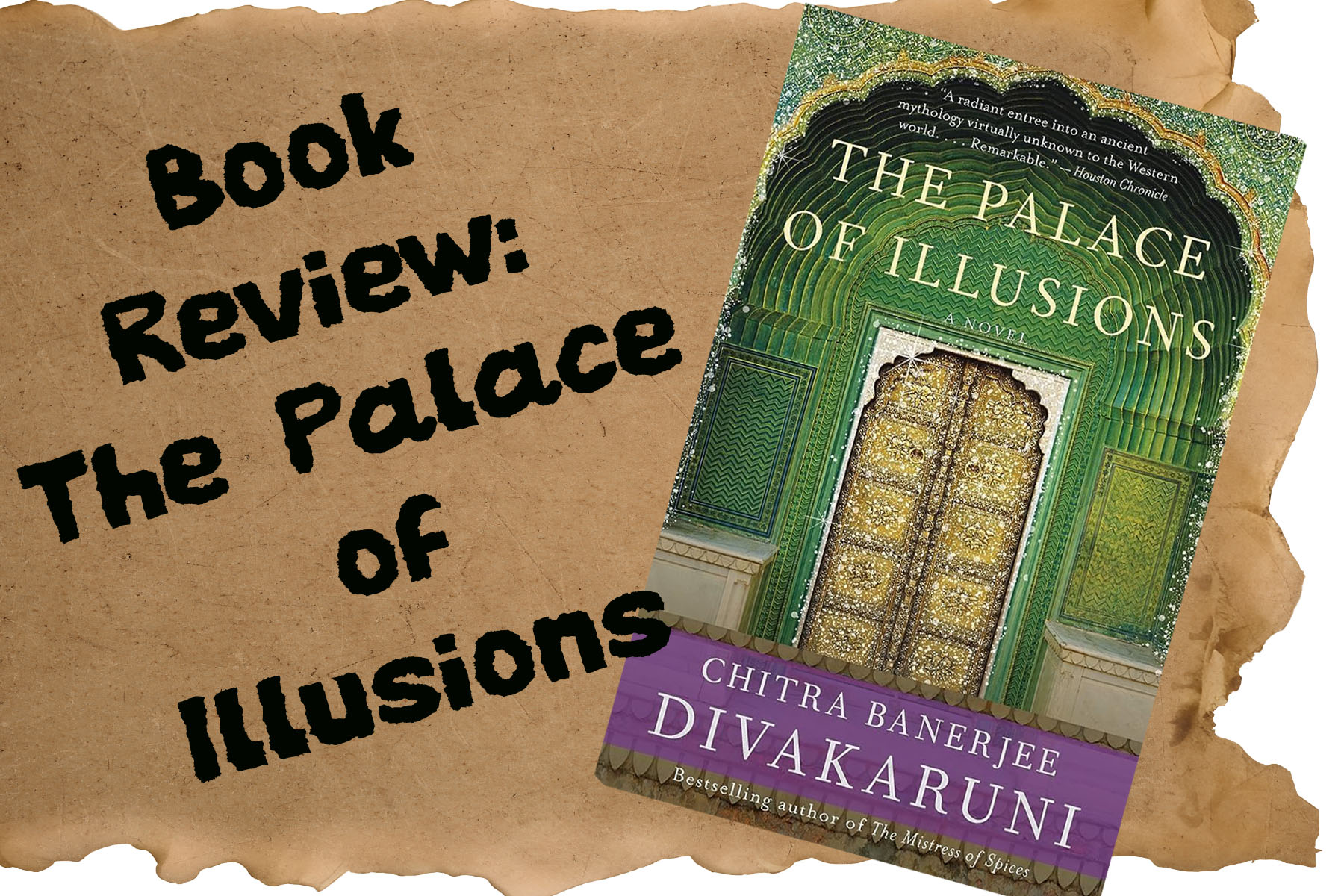
Chitra Banerjee Divakaruni’s The Palace of Illusions is a triumph of literary imagination and a testament to the enduring power of myth, Apoorva Khare reviews.
“You will be remembered for causing the greatest war of your time.”
The words that echo our subtelties and reflect our reality are the words that hold the core of our existence. And when these words are set together to foray into a narrative, they tend to become time immemorial.
So does the novel The Palace of Illusions. The book by Chitra Banerjee Divakaruni is a spellbinding reimagining of the ancient Indian epic, the Mahabharata, albeit from Draupadi’s perspective. Divakaruni’s narrative prowess and her ability to infuse life into mythological characters create a rich and enthralling tapestry that transcends time and culture.
The novel takes us on an enchanting expedition through Draupadi’s life, from her fiery birth to her marriage with the five Pandava brothers and the subsequent events that led to the great War of Kurukshetra. But you may ask, what makes it so special? Well, it is hidden gems in the form of underlying stories and narrative that makes this book like no other. Like, to whom was Draupadi secretly attracted to? Or who was Shikandi and what was her story?
“His eyes were filled with an ancient sadness. They pulled me into them. My impatience evaporated. I no longer cared to see Arjun’s portrait. Instead, I wanted to know how those eyes would look if the man smiled.”
— Draupadi, The Palace of Illusions
The author’s narrative skill is evident as she weaves together a seamless blend of history and mythology, with a dash of fiction, breathing new life into characters who have been revered and debated over for centuries. Divakaruni’s Draupadi bares her innermost thoughts, fears, and desires, allowing the readers to connect with her on an intensely human level. The book wisely, yet beautifully, unveils Draupadi’s complex relationships, her struggles for identity, and the societal expectations that shape her destiny. In doing so, the author not only humanizes a mythological character but also challenges traditional narratives that often sideline the female perspective.
One of the novel’s fortes lies in its exploration of the Mahabharata’s morally abstruse characters, be it the Pandavas, Kauravas, or Bheeshma Pitama, by questioning the conventional notions of heroism and villainy. She challenges readers to reconsider their preconceived notions about these characters, presenting them as nuanced individuals shaped by circumstances and choices.
“Aren’t we all pawns in the hands of time, the greatest player of them all?”
Where we preach and discuss only the heroic male characters of Mahabharat, Divakaruni has beautifully narrated and empathized with minor yet important female characters as well. Through her book, she has tried to retell their stories. She has challenged the age-old thought that if women are shown as strong, then they are “problem/bad” women and that they are the cause of the war and all the bad happenings.
Remember this little sister: wait for a man to avenge your honor, and you’ll wait forever.
Divakaruni’s prose is poetic and evocative, transporting readers to the grandeur of ancient India while maintaining accessibility. Divakaruni’s vivid descriptions bring the settings to life, from the opulent halls of Hastinapura to the war-torn landscapes of Kurukshetra. The author’s attention to detail is commendable, and creates a sensory experience that immerses the reader in the sights, sounds, and emotions of the Mahabharata.
Divakaruni skillfully navigates the complexities of human relationships, exposing the fragile illusions that shape our perceptions and influence our actions. The palace becomes a metaphor for the ephemeral nature of worldly pursuits, and Divakaruni prompts readers to question the authenticity of the realities they construct for themselves.
“Can our actions change our destiny? Or are they like sand piled against the
breakage in a dam, merely delaying the inevitable?”
By giving voice to Draupadi and reinterpreting a timeless epic, Divakaruni invites readers to reflect on the enduring themes of love, power, and destiny. The Palace of Illusions is a testament to Divakaruni’s storytelling prowess and her ability to breathe new life into ancient tales, making them relevant and captivating for a contemporary audience.
In conclusion, Chitra Banerjee Divakaruni’s The Palace of Illusions is a triumph of literary imagination and a testament to the enduring power of myth. It is a novel that captivates, challenges, and ultimately enriches the reader’s understanding of the human condition. Divakaruni’s gift for storytelling elevates this work to a level of artistry that will undoubtedly leave a lasting impression on those who embark on this extraordinary literary journey.
“Try to remember that you are the instrument and I the doer. If you can hold on to this, no sin can touch you.”
Pick up The Palace of Illusions from any Kunzum store or WhatsApp +91.8800200280 to order. Buy the book(s) and the coffee’s on us.

About the reviewer:
29-year-old Apoorva Khare works as an editor with a leading publishing house based in New Delhi. She has recently published her debut novel Beneath the Gulmohar Tree which is available globally on Amazon. | Apoorva’s Instagram
